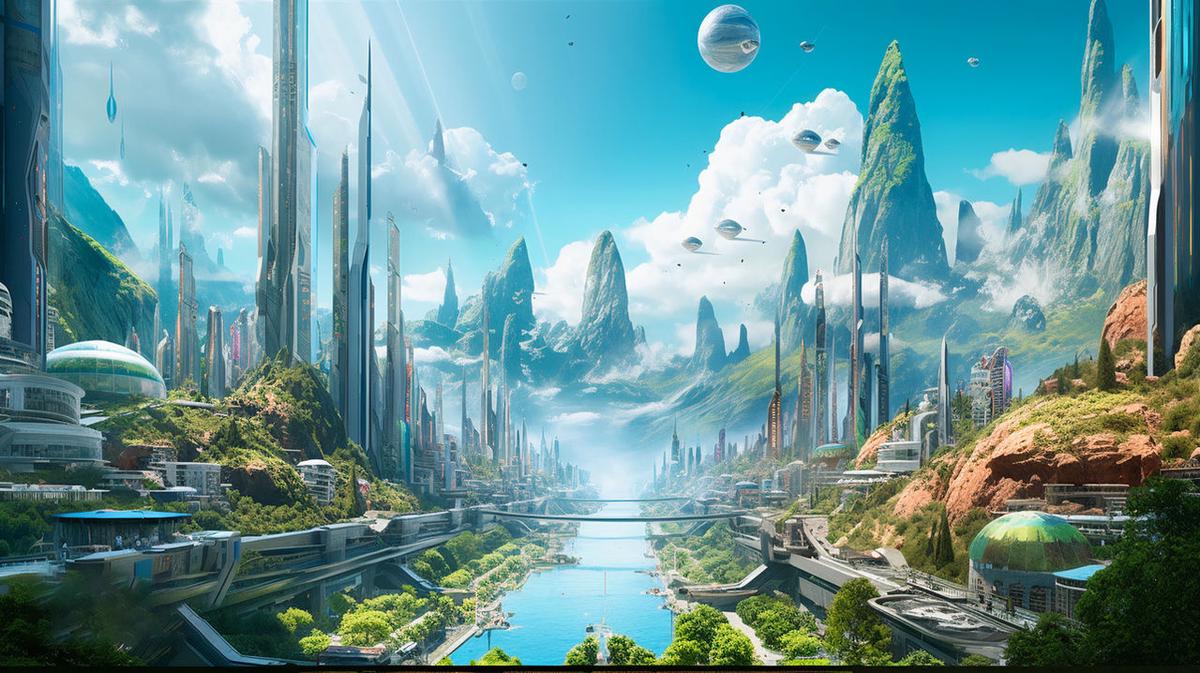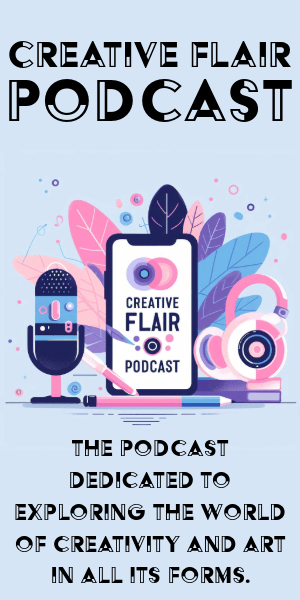Understanding Blockchain Technology in Art
Blockchain technology is revolutionizing the art world, transforming how we conceive, authenticate, and trade artistic creations. This innovative system creates an unalterable public record for each artwork, akin to shifting from traditional paintbrushes to digital pixels.
For artists, blockchain offers a robust method to establish ownership and authenticity. It's comparable to assigning each piece a unique, indelible digital fingerprint. This transparency instills confidence in both creators and buyers during transactions.
Key features of blockchain in art:
- Smart contracts: Automated agreements handling royalties and sales
- Non-Fungible Tokens (NFTs): Unique digital assets representing ownership
- Decentralized ledger: Transparent, tamper-resistant record-keeping
While blockchain presents exciting opportunities for the art community, it also faces challenges:
- Regulatory uncertainties
- Environmental concerns due to energy consumption
- The need for wider adoption and understanding
Despite these hurdles, blockchain is creating unprecedented opportunities for artists in the digital realm, reshaping the landscape of art creation, ownership, and trade.
Tokenization and NFTs
Tokenization and Non-Fungible Tokens (NFTs) are at the forefront of the art world's digital revolution. These technologies are transforming digital creations into unique, ownable assets, each represented by a digital certificate of authenticity.
Democratizing Art Collecting
This new system is making art collecting more accessible. Anyone with a digital wallet can participate in buying and selling NFTs, broadening the market to include new collectors. It's also revolutionizing artists' revenue streams through smart contracts, enabling creators to earn royalties on subsequent sales of their work.
Digital Artists' New Frontier
For digital artists, NFTs present unprecedented opportunities. They can now monetize their work in ways previously impossible, opening new avenues for creativity and expression in the digital space.
"NFTs create a seamless way to sell digital art that might not have much of a market. Additionally, there are ways in which creators can get paid fees for each subsequent sale of the art." – Solo Ceesay, CEO of Calaxy
Challenges and Concerns
However, the NFT landscape isn't without its challenges:
- Environmental Impact: Concerns about energy consumption and carbon footprint
- Market Volatility: Rapid fluctuations in NFT values
- Authenticity Issues: Risks of fraud and misrepresentation
As the technology evolves, addressing these concerns will be crucial for the sustainable growth of the NFT market and its integration into the broader art world.
Impact on Artists and Collectors
Blockchain is reshaping the dynamics between artists and collectors, eliminating intermediaries and empowering creators with unprecedented control over their work. This shift allows artists to connect directly with buyers, setting their own terms and prices.
Benefits for Artists
- Smart contracts ensure automatic, fair compensation
- Greater control over artwork distribution and licensing
- New revenue streams through tokenization and NFTs
Advantages for Collectors
- Enhanced ability to verify artwork authenticity and provenance
- Increased transparency in art transactions
- Access to a wider range of art and artists
However, this technological shift is disrupting traditional art world structures. Galleries and dealers are facing pressure to adapt or risk becoming obsolete. Some are embracing the change, while others struggle to keep pace with the rapidly evolving landscape.
Environmental Concerns: The environmental impact of blockchain technology, particularly in NFT creation and trading, is a growing concern for both artists and collectors. There's an increasing demand for more sustainable practices in the digital art space.
Despite these challenges, blockchain is opening up new possibilities in the art world, creating a more democratic space where artists wield greater influence and collectors enjoy improved access to unique works.
Challenges and Risks
While blockchain brings exciting changes to the art world, it also presents significant challenges:
1. Regulatory Uncertainty
The rules governing digital art and NFTs are still evolving, creating confusion for artists and collectors. Clear regulatory frameworks are needed to provide stability and protection in this new market.
2. Environmental Impact
The energy consumption of blockchain networks has raised serious environmental concerns. The art community is increasingly calling for greener alternatives in creating and trading digital art.
3. Security Vulnerabilities
While blockchain itself is generally secure, the surrounding ecosystems can be vulnerable to hacks and fraud. Protecting digital artworks and transactions remains an ongoing challenge.
4. Intellectual Property Rights
The digital realm blurs the lines between inspiration and copying. Defining and protecting intellectual property rights in AI-generated and blockchain-based art is a complex issue.
| Challenge | Impact |
|---|---|
| Regulatory Uncertainty | Legal ambiguity, market instability |
| Environmental Concerns | Carbon footprint, sustainability issues |
| Security Risks | Potential for fraud, financial losses |
| IP Rights Confusion | Copyright disputes, creative limitations |
These challenges are driving innovation in the art world. Artists, collectors, and technologists are collaborating to find solutions, shaping the future of digital art and ownership in the process.
Ethical Considerations and Public Sentiment
As blockchain reshapes the art world, it raises critical ethical questions. Artists are grappling with how to protect their rights in this new digital landscape, where the concept of ownership is evolving rapidly.
Public Opinion's Role
Public sentiment plays a crucial role in shaping the development of blockchain art. As awareness grows, opinions on NFTs and digital art influence regulations and industry practices. Balancing innovation with ethical concerns is key, with lawmakers and industry leaders working to create rules that protect artists and collectors without stifling creativity.
"We are in the middle of the biggest art heist in history. And, despite widespread protests from creators, huge numbers of people are cheering it on." – Ed Newton-Rex, CEO of FairlyTrained
Sustainability and Accessibility
There's a growing focus on making blockchain art more sustainable and accessible. This reflects broader societal concerns about technology's impact on the environment and equity in the art world.
Ongoing Dialogue
As blockchain art evolves, maintaining an open conversation is crucial. Artists, collectors, and the public all have a stake in ensuring that this new form of creativity respects both innovation and ethical values. The challenge lies in finding a balance that fosters artistic expression while addressing concerns about authenticity, ownership, and fair compensation.
Ultimately, the ethical landscape of blockchain in art is still being shaped. It represents both a challenge and an opportunity to redefine how we value and interact with art in the digital age.
Future of Blockchain in Art
Blockchain technology is poised to reshape the art world, intertwining with other innovative technologies like AI, VR, and AR. This convergence promises to transform how we create, experience, and trade art.
Imagine virtual reality exhibitions where blockchain secures digital masterpieces, allowing global access to immersive art experiences. Or picture augmented reality transforming urban landscapes with blockchain-authenticated digital art displays that evolve with public engagement.
Artificial intelligence, too, plays a role in this future. As AI generates and refines art, blockchain can ensure proper attribution and provenance, even for machine-created works. This combination may inspire new artistic languages while preserving traditional concepts of authorship.
Blockchain's potential extends to solving industry challenges. It could:
- Streamline royalty distribution
- Combat copyright infringement
- Increase marketplace fluidity
The technology might also facilitate new forms of collaboration and intellectual property exchange.
However, ethical and environmental concerns accompany these advancements. The art world may need to adopt greener blockchain solutions to align technological progress with environmental responsibility.
In this evolving landscape, the distinction between physical and digital art blurs. Blockchain's role in this transformation promises to connect artists, collectors, and enthusiasts globally, fostering a new era of artistic expression and appreciation.

As blockchain and art continue to intertwine, we can expect a future where creativity and technology evolve hand in hand. This partnership will likely redefine how we create, share, and own art in the digital age, opening up exciting possibilities for everyone involved in the art world.
"We're entering uncharted territory—when AI generates content inspired by existing work, it's not immediately clear if it's innovation or infringement. The real question is how we define originality in the age of AI. Ultimately, creators deserve clarity, protection, and credit, regardless of how the lines are drawn." – Robert Scoble, AI Sherpa and Co-author, "The Infinite Retina"
The integration of blockchain in the art world offers several key benefits:
- Reduction of Intermediaries: Blockchain can eliminate middlemen, giving artists more control over their work and enabling direct sales to buyers.
- Guaranteed Intellectual Property: Permanent storage of intellectual property rights in the cloud, improving transparency and copyright protection.
- Improved Traceability: Complete tracking of an artwork's journey from creation to final destination, reducing illicit trafficking and counterfeiting.
- Tokenization of Art: Allowing fractional ownership of high-value artworks, making fine art investment more accessible.
As blockchain technology matures, we can anticipate continued innovation in its integration with platforms like augmented reality (AR), virtual reality (VR), generative AI, and Web3, providing immersive experiences for art enthusiasts and new avenues for artistic expression.
However, challenges remain. The industry must address regulatory uncertainties, sustainability concerns, and the need for wider understanding of the technology among artists and collectors. As these issues are resolved, blockchain has the potential to usher in a new renaissance in the art world, balancing technological innovation with artistic integrity.






















